Chronic Fatigue Syndrome - Is prolonged exposure to
advertisement
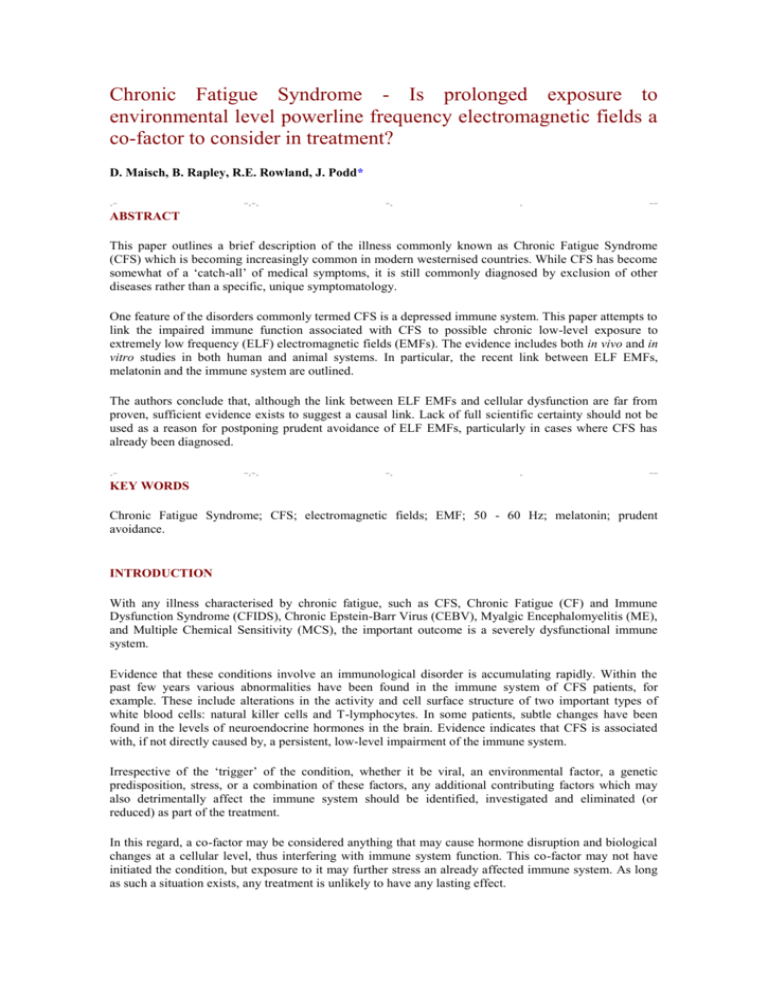
Chronic Fatigue Syndrome - Is prolonged exposure to environmental level powerline frequency electromagnetic fields a co-factor to consider in treatment? D. Maisch, B. Rapley, R.E. Rowland, J. Podd* .ABSTRACT -.-. -. . -- This paper outlines a brief description of the illness commonly known as Chronic Fatigue Syndrome (CFS) which is becoming increasingly common in modern westernised countries. While CFS has become somewhat of a ‘catch-all’ of medical symptoms, it is still commonly diagnosed by exclusion of other diseases rather than a specific, unique symptomatology. One feature of the disorders commonly termed CFS is a depressed immune system. This paper attempts to link the impaired immune function associated with CFS to possible chronic low-level exposure to extremely low frequency (ELF) electromagnetic fields (EMFs). The evidence includes both in vivo and in vitro studies in both human and animal systems. In particular, the recent link between ELF EMFs, melatonin and the immune system are outlined. The authors conclude that, although the link between ELF EMFs and cellular dysfunction are far from proven, sufficient evidence exists to suggest a causal link. Lack of full scientific certainty should not be used as a reason for postponing prudent avoidance of ELF EMFs, particularly in cases where CFS has already been diagnosed. .KEY WORDS -.-. -. . -- Chronic Fatigue Syndrome; CFS; electromagnetic fields; EMF; 50 - 60 Hz; melatonin; prudent avoidance. INTRODUCTION With any illness characterised by chronic fatigue, such as CFS, Chronic Fatigue (CF) and Immune Dysfunction Syndrome (CFIDS), Chronic Epstein-Barr Virus (CEBV), Myalgic Encephalomyelitis (ME), and Multiple Chemical Sensitivity (MCS), the important outcome is a severely dysfunctional immune system. Evidence that these conditions involve an immunological disorder is accumulating rapidly. Within the past few years various abnormalities have been found in the immune system of CFS patients, for example. These include alterations in the activity and cell surface structure of two important types of white blood cells: natural killer cells and T-lymphocytes. In some patients, subtle changes have been found in the levels of neuroendocrine hormones in the brain. Evidence indicates that CFS is associated with, if not directly caused by, a persistent, low-level impairment of the immune system. Irrespective of the ‘trigger’ of the condition, whether it be viral, an environmental factor, a genetic predisposition, stress, or a combination of these factors, any additional contributing factors which may also detrimentally affect the immune system should be identified, investigated and eliminated (or reduced) as part of the treatment. In this regard, a co-factor may be considered anything that may cause hormone disruption and biological changes at a cellular level, thus interfering with immune system function. This co-factor may not have initiated the condition, but exposure to it may further stress an already affected immune system. As long as such a situation exists, any treatment is unlikely to have any lasting effect. Existing evidence indicates that exposure to environmental level 50 - 60 Hz EMFs may be an immune system stressor with the potential to cause hormone disruption and changes at a cellular level. Therefore, EMF exposure should be evaluated as a potential risk factor for people suffering from disorders with the common feature of unexplained chronic fatigue. CHRONIC FATIGUE SYNDROME (CFS) CFS is a general label used to describe a debilitating illness, the cause of which is still unknown. CFS is also referred to as CFIDS (Chronic Fatigue and Immune Dysfunction Syndrome), CEBV (Chronic Epstein-Barr Virus), ME (Myalgic Encephalomyelitis), as well as several other designations. It is a complex illness which has been intensively studied for the past 40 years without firm conclusions as to its cause. Diagnosis is done largely by exclusion of other possible diseases. Clinical CFS is characterised by incapacitating fatigue (experienced as exhaustion and extremely poor stamina) of at least 6 months’ duration, neurological problems and a constellation of symptoms which can resemble other disorders, including: mononucleosis, multiple sclerosis, fibromyalgia, aids-related complex (ARC), Lyme disease, post-polio syndrome and autoimmune diseases such as lupus. These symptoms tend to wax and wane but are often severely debilitating and may last for many months or years. All segments of the population (including children) are at risk, but women under the age of 45 seem to be the most susceptible. As with most diseases, CFS affects people differently. Not everybody reaches the severe end of the CFS spectrum1. There is a difference between CF and CFS. CF is a fairly widespread symptom in the community, whereas CFS is an unexplained debilitating fatigue of at least 6 months duration which severely reduces the level of activity. CFS is considerably less common. In addition to persistent and extreme fatigue, usually with an abrupt onset accompanied by an ‘infectiouslike’ illness, other CFS symptoms that have been identified include the following: substantial impairment in short-term memory and concentration; depression; sore throat; tender lymph nodes; muscle pain; multijoint pain without joint swelling or redness; unusual headaches; unrefreshing sleep; cognitive function problems (such as spatial disorientation and impairment of speech and/or reasoning); visual disturbances (blurring, sensitivity to light, eye pain); chills and night sweats; dizziness and balance problems; sensitivity to heat and cold; irregular heartbeat; abdominal pain; diarrhoea; irritable bowel; low temperature; numbness or a burning sensation in the face or extremities; dryness of the mouth and eyes (Sicca syndrome); hearing disorders; menstrual problems including PMS and endometriosis; hypersensitivity of the skin; chest pains; rashes; allergies and sensitivities to odours (including chemicals and medications); weight changes without changes in diet; hair loss; lightheadedness; fainting; muscle twitching and seizures2. Research suggests that CFS results from a dysfunction of the immune system, involving a disruption of fundamental Central Nervous System (CNS) mechanisms, such as the sleep-wake cycle and the hypothalamic-pituitary-adrenal axis3. One study found that more than a quarter of CFS patients had abnormal brain scans, and subtle changes have been found in the levels of neuroendocrine hormones 4. Other research has found electrolyte disturbances which sometimes included permanent changes in cell membranes’ ability to pass electrolytes, permanent biochemical changes in mitochondrial function and disturbances of insulin and T3-thyroid hormone functions5. In 1989, Hickie, Lloyd and Wakefield, at the Prince Henry Hospital in Sydney, published results which show a significant reduction in the absolute number of peripheral blood lymphocytes in the total T-cell population and in two T-cell subsets, as well as a significant reduction in T-cell function. They also found reduced immunoglobulin (antibody) levels6. In a later paper, further alterations in peripheral blood T lymphocytes and impaired natural killer cell cytotoxicity were reported 7. Based on physical and laboratory findings, many scientists believe that viruses are associated with CFS and may be directly involved in causing the syndrome. Several viruses have been studied to determine what, if any, part they play. These include enteroviruses, herpes viruses (especially human herpes virus-6, or hhv-6) and newly-discovered retroviruses8. Originally it was thought that the EBV, a herpes virus that causes mononucleosis, was the cause of this syndrome. However, researchers now believe that EBV activation (when it exists) is a result of or a complication of CFS rather than its cause9. To date, no virus has been conclusively shown to be an essential element of CFS. There is one school of thought that holds that CFS is essentially a psychological disorder. This is because several of the symptoms seen in CFS patients are also seen in psychiatric illnesses, notably depression and anxiety disorders. Estimates of 28% - 50% have been claimed for the occurrence of depression in CFS sufferers, while 15% - 25% is the comparable rate in the general community. Depression sometimes appears before the onset of CFS. This suggests that depression might be a cause and not a consequence of the syndrome, or that depression may be the first manifestation of the illness in some patients. Sleep disorders which usually accompany depression would also exacerbate CFS, possibly through the disruption of melatonin activity. The overlap in symptoms between CFS and depression unfortunately blurs the distinction between a possible psychological or physical cause. However, in view of evidence that depression itself sometimes has a physical cause and responds best to physical treatments, there is some evidence that in CFS sufferers, depression may be a result of an active viral infection or an immunological disorder10. It is also possible that many CFS sufferers become depressed as a consequence of the limitations placed on them by their illness11. Research efforts are directed toward identifying and isolating the fundamental agent(s) responsible for triggering immune system disruption in persons with CFS. There are on-going studies of immunological, neurological, endocrinological and metabolic abnormalities and risk factors such as genetic predisposition, age, sex, prior illness, other viruses, environmental factors and stress. It may eventually be found that CFS is multi-factorial in origin with no single factor identifiable as the cause. One factor that may play a role in CFS, is prolonged exposure to low level 50-60 Hz EMFs. We now turn our attention to examining the known biological effects of low level ELF EMFs, particularly those concerning impairment of the immune system. .-.-. -. . POWERLINE FREQUENCY MAGNETIC FIELDS AND THE IMMUNE SYSTEM -- As an indicator of the possibility that exposure to low level 50 - 60 Hz EMFs may play a role in chronic fatigue/immune system dysfunction, we must look for evidence that human exposure to these fields may cause changes at a cellular level, such as hormone disruption and calcium ion efflux 12, which may have the potential to adversely impact on the immune system. NCRP DRAFT REPORT GUIDELINES (1995) The biological effects of EMFs were examined in great detail by an expert committee of the USA National Council on Radiation Protection and Measurements (NCRP), a Congressionally chartered organisation which was contracted by the Environmental Protection Agency (EPA) in 1983 to conduct a review of the biological effects of ELF EMFs. Work was discontinued in 1986, due to funding cuts at the EPA, but resumed in 1991. In early 1995 the draft of the 800-page NCRP report was leaked to the New York-based publication Microwave News, which published the report’s findings in August 1995. The final report was supposed to be publicly available in early 1996, but has received such intense industry opposition to its findings that its final outcome remains uncertain. The Committee’s membership was described by chairman Dr. Ross Adey as "carefully selected to cover the great majority of societal interests on this scientific problem, including power industry engineers, epidemiologists, public health specialists as well as molecular and cellular biologists" 13. The draft report generally endorses a 2 mG (0.2 mcT) exposure limit, having immediate implications for new day care centres, schools and playgrounds, and for new transmission lines near existing housing. A somewhat more flexible policy would be applied to new housing and offices. For existing facilities, the committee recommended a more gradual approach with stronger restrictions phased in over time if the evidence of a health risk continues to grow. The NCRP Committee states that, "In key areas of bioelectromagnetic research, findings are sufficiently consistent and form a sufficiently coherent picture to suggest plausible connections between ELF EMF exposures and disruption of normal biological processes, in ways meriting detailed examination of potential implications in human health." 14 From studies on humans the committee cites evidence for a link between EMFs and: 1) childhood and adult cancer, including leukaemia and brain cancer; 2) teratological effects and other reproductive anomalies; 3) neuroendocrine and autonomic responses which, separately or collectively, may have pathophysiological implications; 4) neurochemical, physiological, behavioural and chronobiological responses with implications for development of the nervous system. From laboratory studies the committee notes that EMFs: 1) affect cell growth regulation in animal and tissue models in a manner consistent with tumour formation; 2) increase tumour incidence and decrease tumour latencies in animals; 3) alter gene transcriptional processes, the natural defence response of Tlymphocytes and other cellular processes related to the development and control of cancers; 4) affect neuroendocrine and psychosexual responses. In relation to the effect of low level EMFs on the pineal hormone, melatonin, the Committee concluded that: "There has been a strong focus on ELF field actions in the pineal gland, relating to effects on synthesis and secretion of the pineal hormone melatonin, and on a broad series of regulatory functions mediated by this hormone. Melatonin plays a key role in controlling the 24-hour daily biological rhythm. Disturbance of the normal diurnal melatonin rhythm is associated with altered oestrogen receptor formation in the breast, a line of experimental evidence now under study, or possible links between ELF field exposure and human breast cancer. . . Further, melatonin has general properties as a free radical scavenger, with the possibility of a preventative role in oxidative stress, recognized as a basic factor in a broad spectrum of human degenerative disorders, including coronary artery disease, Parkinson’s and Alzheimer’s diseases, and aging."15 According to the Committee, problematic sources of ELF EMFs include local electrical distribution systems as well as high voltage power transmission systems. Particular appliances, including electric blankets and video display units also rate highly as problem sources along with "various occupational environments". The Committee states that the evidence points to human health hazards in everyday exposures to EMFs, particularly magnetic fields exceeding 2 mG (0.2 mcT) and electric fields at intensities in the range 10-100 V/m (volts per metre). "..there is an implication that a significant proportion of the world’s population may be subjected to a low level of risk, but a risk factor with significant societal consequences, by reason of its pervasive nature and the serious consequences for affected individuals."16 MAGNETIC FIELD EXPOSURE AT THE CELLULAR LEVEL The inter-relationships between various cellular processes are far too complex for a thorough discussion here. However, the scientific evidence accumulated to date from cell biology, biochemistry and bioelectromagnetics gives an excellent understanding of these processes and how EMFs may possibly interact with these processes. It is important to note that laboratory findings are not necessarily fully applicable to real life situations. Cell-level experiments are intended to detect and characterise an effect in a system simpler than a multi-celled organism. As such, in vitro experimental results are not affected by endogenous homeostatic [repair] mechanisms encountered in the whole organism and thus may be more sensitive to applied fields17. The hormone, melatonin, and the neurotransmitters, serotonin and dopamine, are neurochemical messengers that aid in central nervous system transmission, or in the case of hormones, travel throughout the body to effect cellular changes. There are believed to be more than 100 transmitters and hormones that allow a complex interaction among the CNS, the endocrine system, and the immune system. The cell membrane, where transmitters and hormones bind or cross into the cytoplasm, is the likely site of any interaction with external man-made EMFs. There are receptor sites both on the cell membrane and inside the cell to which these chemical messengers bind, starting a cascade of chemical events that may eventually alter the cell’s behaviour in one of many ways. An apt description of the cellular communication process was given by Dr W. Ross Adey, the former Associate Chief of Staff for Research and Development at the Pettis Memorial VA Medical Centre at Loma Linda, California, and NCRP committee chairman: "It is generally agreed that the first detection of ELF and ELF-modulated RF/microwave fields occurs on the membranes that enclose all cells. These complex cell membranes act as detectors, amplifiers, and couplers of weak surface electrical and chemical signals to the cell’s interior. Cells also communicate with neighbours by outward signals, faintly ‘whispering together’ electrically and chemically, through signals that are also sensitive to imposed EMFs." 18 It is not necessary for external EMFs to penetrate into the cell interior in order to cause changes inside the cell, as reported by the International Commission on Non-Ionizing Radiation Protection (ICNIRP) in 1996: "By influencing signal transduction pathways, which in turn can regulate cell proliferation, cell differentiation, and even transformation to a cancer phenotype, ELF-EMFs can potentially be involved in a host of disease processes without ever penetrating the cell membrane in any significant manner." 19 In summary, EMFs can bring about fundamental changes in both electrical and chemical signalling in the CNS. One chemical messenger that has been shown to be particularly susceptible to the influence of weak ELF EMFs is melatonin. .MELATONIN -.-. -. . -- Both human and animal circadian rhythms are synchronised with the natural day/night cycle. The major control gland over this natural cycle is the pineal gland which secretes the neurohormone, melatonin. In mammals, light falling on the eye’s retina during the day, produces signals which are biochemically amplified to stimulate the pineal gland to reduce its melatonin output. At night the absence of light allows the pineal gland to produce melatonin. Melatonin directly enters the bloodstream, through which it has access to every cell in the body, passing directly to receptors in the nucleus 20. In the cell nucleus, melatonin plays a role in regulating gene expression. The ability of melatonin to enter all cells is essential for one of its other important functions, which is to act as a scavenger of highly toxic oxygen-based free radicals. The production of these free radicals is a consequence of the utilisation of oxygen by all aerobic organisms. About 1% - 2% of inspired oxygen ends up as toxic free radicals, a byproduct of the respiration cycle. These oxygen radicals can damage macromolecules such as DNA, proteins and lipids. This damage is referred to as oxidative stress21. Because of its ability to eliminate free radicals, melatonin is regarded as an efficient cell protection and oncostatic agent. At night the increasing level of melatonin helps eliminate the build up of free radicals, thereby allowing DNA synthesis and cell division to occur with a far lower chance of damage. Melatonin also inhibits the release of oestrogen, prolonged exposure to which may increase the risk of breast cancer22. According to Brzezinski, melatonin may enhance the immune system and counteract stress-induced immunosuppression by augmenting the immune response 23. THE MELATONIN HYPOTHESIS In 1987 Stephens et al. suggested that EMFs reduce melatonin production by the pineal gland and that melatonin suppresses the development of breast cancer 24. They proposed that EMFs may operate as a cofactor in the development of some cases of this type of cancer. Since then, results from five in vitro studies, conducted in three major laboratories, using human breast cancer cell cultures, have shown that low-level powerline frequency magnetic fields in the order of 12 mG (1.2 mcT) can block melatonin’s ability to suppress breast cancer cells25. This is known as the melatonin hypothesis. In addition, several human exposure studies have found lowered levels of melatonin in people exposed to EMFs. (Section 2.3) At the Second World Congress for Electricity and Magnetism in Biology and Medicine, held in Bologna, Italy, in June of 1997, the program bulletin states that: "A number of experimental studies have been conducted to test the [melatonin] hypothesis. Although the literature is still evolving and consensus is being built, it is fair to say, a) there exists credible scientific support for the hypothesis and, importantly, b) this support encompasses in vitro, in vivo, and epidemiological research. The melatonin hypothesis, thus, currently represents one of the more welldocumented/tested interactions in the field of bioelectromagnetics." 26 In 1988, Liburdy reported that "The melatonin hypothesis invokes a general mechanism that has relevance to all hormone-dependent tissue responsive to oestrogen and/or prolactin, such as human mammary epithelial tissue, ovarian tissue and prostate tissue" 27. A further study found that office-place EMF exposure was apparently related not only to a decrease in melatonin levels but also to an increase in the level of the stress hormone adrenocorticotropic hormone (ACTH)28. The implications for CFS are obvious, for chronically high levels of ACTH are known to suppress immune function. While the evidence for a link between ELF EMFs and melatonin is strong, other chemicals are known to be affected too. One of these is calcium ions, which are critical for the proper functioning of all cells. CALCIUM IONS, PROTEIN KINASES AND ORNITHINE DECARBOXYLASE In their comprehensive review of the effects of EMFs on molecules and cells, Goodman et al. note that the EMF effect on calcium flux has been the subject of intense scrutiny because of the important physiological role of calcium and its relationship to membrane changes. The results are equivocal, but most in vitro experiments performed on human tissues show enhanced calcium flux in response to radiofrequency and ELF fields. Liburdy and his colleagues in particular have examined the effectiveness of the magnetic or electric field component in altering calcium flux and their combined data strongly supports the conclusion that the electric field component is responsible for altered calcium flux. They suggest that the electric field operates by inducing an opening of the calcium channel in the membrane rather than by increasing calcium mobilisation from the endoplasmic reticulum29. The possible connection between EMFs, calcium ions and immune system function was summarised by Cherry: "ELF and RF/MW, modulated at ELF frequencies, change the oscillation frequency and amplitude [of calcium ion signalling] and change the influx and efflux of calcium ions in and around the cell membrane. The changing oscillation frequency and amplitude is related to the immune response of the cell and shows that the oscillating applied field produces an antibody-like reaction as though the cell has been attacked. The influx and efflux changes relate to the signal transduction pathway in which calcium ions participate. This is one of the biochemical pathways which regulate cell behaviour. This is altered by the applied oscillating electromagnetic field. Since signal transduction controls cell division, cell differentiation and cell proliferation, this EMR-induced alteration to signal transduction has the strong potential to participate in tumour formation or promotion. Alteration of T-lymphocytes and other immune system factors suggests that EMR exposure causes immunosuppression, partially through induced calcium ion efflux." 30 Changes in cellular calcium flow are known to stimulate a group of enzymes called protein kinases, which play an important role in regulating several cellular functions. Two recent studies found evidence that inside cells, EMFs can activate certain signalling pathways; for example, protein kinase activity has been associated with cancer. Specifically these research groups discovered that the products of a particular class of oncogenes, Src tyrosine kinases, are rapidly activated by EMF exposure. The functions of other key cellular elements facilitating the cancer-promoting function of these tyrosine kinases also seem to be amplified five- to ten-fold. In addition, the results of these studies demonstrate that EMFs may alter biochemical events in the immune system that determine our susceptibility to infections 31. It has been reported by Uckun that EMFs can disrupt the "growth regulatory balance" in cancer cells 32. Uckun also reports similar EMF-induced activity in a different, but related, enzyme system where it was found that cells exposed for 5 to 15 minutes to EMFs similar in strength to those found in electric razors (1000 mG / 100 mcT) caused a 5- to 10-fold increase in the activity of a gene associated with the formation of leukemia33. Referring to this research, Adey states that, "This is another piece of evidence, which we first began to see in the 1980s, pointing to the importance of protein kinases as a key intracellular communication system that is sensitive to both ELF and modulated RF fields" 34. The possibility exists that the immune system is compromised by external EMFs which may alter chemical messengers, resulting in erroneous instructions being sent to internal cellular regulation systems. Uckun found that elevated activation of the enzyme tyrosine kinase by EMFs may represent the initial manifestation of EMFs’ biological influence, leading to a cascade of biological events. He also reported the activation of a second tyrosine kinase, known as BTK, "Because you don’t have any hormone production without activation of tyrosine, the new findings may also explain provocative hormonal perturbations linked to EMF exposures" 35. Another important enzyme involved with cell growth is ornithine decarboxylase (ODC), which is required for DNA replication. ODC is always present during cell growth and plays a critical role in cell transformation, but increased levels are considered a marker for the type of cell activity connected with cancer growth. Research by Litovitz et al. into ODC activity has shown that at the applied frequencies of 55 and 65 Hz, there is a significant (two fold) increase in ODC activity in L929 cells exposed to a magnetic field of 100 mG (10 mcT). The authors conclude that "modification of its [ODC] enhancement by an applied field is of general interest for questions of EMF exposure. We suggest, however, that the coherence phenomenon noted in these experiments is likely of more widespread consequence, and that other biological responses with demonstrated EMF sensitivity will display comparable coherence dependence."36 The evidence we have so far reviewed would suggest a link between EMFs and calcium levels, melatonin levels, protein kinase and ODC activity. Thus it is not unreasonable to conclude that CFS, which may be an indicator of metabolic disruption, is partly a manifestation of exposure to low level EMFs. .-.-. -. . HUMAN EXPERIMENTAL FIELD STUDIES AND HORMONE DISRUPTION -- In the previous section we note the possible link between EMFs and melatonin flux. A preliminary study in 1997 of 60 workers at a Finnish garment factory found "a highly significant effect" of EMFs in reducing nocturnal melatonin levels. Magnetic field (MF) measurements were taken for the two types of machines used in the factory and operators were assigned to high or low exposure groups, based on the type of machine they were using, with average exposures either above or below 10 mG (1.0 mcT). Non industrial workers who were not exposed to MFs were the controls. This study found strong effects of magnetic field exposure on night-time levels of melatonin. No difference was found in melatonin levels on week nights and Sunday nights, indicating "that the possible suppression caused by magnetic field exposure is chronic, with little recovery during the weekend" 37. A 1996 study of 192 electric utility workers by Reif and Burch found that some EMF exposures are associated with low levels of melatonin. They found a significant association between MF exposures and lower daytime melatonin levels on the second and third of three days of measurement38. The lack of an effect on the first day (following a weekend or equivalent) may indicate a cumulative effect of exposure Some studies have suggested that EMF effects on melatonin may depend on whether the field is continuous or intermittent. Reif and Burch found that magnetic fields in the home that were "temporally coherent" (less intermittent) had a very significant association with lower melatonin levels at night. They concluded that the intensity and temporal characteristics of MFs may both play a role in the suppression of melatonin39. Visual display units (VDUs) have also been implicated as a significant source of MF radiation. According to Arnetz and Berg, office workers who used VDUs had a significant reduction in circulating levels of melatonin over the course of a working day. No such change was found during days at the office with no VDU use. Levels of the stress hormone, ACTH, increased during the working day and this showed a strong correlation with workers’ subjective assessment of mental strain, but in contrast, mental strain did not significantly correlate with melatonin levels40. Davis (Fred Hutchinson Cancer Centre in Seattle Washington), found that low-level MFs can reduce the nocturnal release of melatonin in women. While the effect was small, it occurred at milliGauss levels and followed a dose-response trend. Davis called the findings "intriguing" given the "very low level of exposure" which reflects "real-world" conditions, but cautioned that the biological significance of the results is not known at this time. Davis stated, "This is the first time we are seeing evidence that relatively small changes in magnetic fields at night can be associated with decreases in melatonin levels that night among humans living in a normal environment" 41. Davis argues that melatonin inhibits the production of other hormones such as oestrogen. Thus, a drop in melatonin has the potential to cause other hormones to surge42. As with the laboratory research these human field exposure studies indicate a possible link between EMFs and hormone disruption which may be a co-factor in the development of CFS. The link has not been firmly established, but further investigation is certainly warranted. DEPRESSION AND EMF EXPOSURE Research in the United States and Britain has found clinical depression to be the major factor in suicides in both countries. There are many types of depression, from seasonal depression (Seasonal Affective Disorder), which normally occurs in the winter months, to low level chronic depression that may linger for months or years. Among the symptoms of clinical depression are weight loss, early waking, diminished sex drive and a general feeling of hopelessness. On the contrary, some people have what is called atypical depression, which is characterised by weight gain and spending much of the day asleep. In 1978, Perry published the findings of an EMF survey which examined the addresses of some 600 suicides reported in the Birmingham U.K. area and found that in homes where the magnetic field was above 1 mG (0.1 mcT) the relative risk of depressive illness was elevated 43. Perry and Pearl conducted a study of 43 high-rise blocks with over 3,000 housing units (a total of approximately 6,000 occupants). The aim of the research was to determine whether there was any correlation between occupants’ level of depression and their proximity to EMFs. Participants suffering from certain types of heart disease and from depression were more likely to be living near the main electrical supply cables in the apartment blocks. Magnetic field strengths measured in all 43 blocks with a single rising cable showed significantly higher magnetic field exposures in the apartments ‘near’ the cable. These fields averaged 3.15 mG (0.315 mcT) nearest the cable and 1.61 mG (0.16 mcT) in the ‘distant’ apartments. A further finding was that, if only those blocks with under floor or storage electric heating were considered, the proportion of cases of depression in occupants living in apartments categorised as ‘near’ the rising cable rose to 82%44. Changes in serotonin levels are known to be associated with depression. For example, lowered levels of this chemical in the brain have been linked to an increase in suicide frequency45. Wolpaw examined the brain functions of monkeys exposed to 60 Hz magnetic fields. He measured the levels of neurohormones in the spinal fluid of monkeys thus exposed for three weeks. It was found that the levels of serotonin and dopamine were significantly depressed immediately following exposure, and that only the dopamine returned to normal levels several months after46. Low night-time melatonin concentrations have been reported in patients with depression, and patients with Seasonal Affective Disorder have phase-delayed melatonin secretion47. Robert Becker, a leading researcher on EMF exposure and depression, summarises his own work, and that of others as follows: "It seems that there may be two types of clinical depression: one which is produced by simple psychosocial factors, and one which is produced by some external factor which influences the production of these psychoactive chemicals by the pineal gland. In view of the known relationship between the pineal gland and magnetic fields, it is advisable that the search for the responsible factor include an evaluation of the effect of abnormal electromagnetic fields" 48. .-.-. OTHER RELEVANT RESEARCH FINDINGS -. . -- Since 1979, when, in a seminal paper, Wertheimer and Leeper first reported a correlation between exposure to power line MFs and childhood leukaemia, there have been well over 30 major epidemiological studies examining the EMF/cancer question. Few studies, however, have looked for evidence of association between environmental power-frequency magnetic field exposure and immunerelated illnesses in humans. In one notable study, Beale et al. examined eight immune-related and chronic illnesses (variables) in a group of 560 adults living near extra high voltage transmission lines in Auckland New Zealand. Using a cross-sectional design to examine the dose-response relationship between MF exposure of adults in their homes and prevalence of these illnesses, five of the eight health variables showed a linear dose-response relationship with exposure. After adjustment for possible confounding, significantly elevated odds ratios were obtained both for asthma and combined chronic illnesses at higher exposure levels. As reported in the paper abstract, "The results are consistent with a possible adverse effect of environmental magnetic field exposure on immune-related and other illnesses"49. Human peripheral blood lymphocyte activity may be affected by exposure to electric fields. For example, Coghill et al. (1998), exposed human peripheral blood lymphocytes in mu-metal- enclosed (EMF shielded) cultures to the donor’s own endogenous electric field overnight and tested for viability by trypan blue exclusion. This showed a 70% viability. The controls (no endogenous electric field) and sham-exposed (same gold wire feed, but unattached to body) both showed about 50% viability. When they fed a 50 Hz electric field into the lymphocyte cultures (same power density, same period of exposure, same temperature, etc.), the viability fell to 40%. This study suggests that 50 Hz electric fields (not magnetic) adversely affect human peripheral blood lymphocytes50. A decrease in human peripheral blood lymphocytes could be implicated in the development of CFS. A 1998 study by Bonhomme-Faivre et al. found "evidence that chronic human exposure to environmental low frequency EMFs ... can cause neurovegetative, haematological and immunological disorders". Specifically, they found that a group of workers who were exposed to MFs ranging from 0.9 mG (0.09 mcT) to 66 mG (6.6 mcT) had significantly lower lymphocyte counts than a similar control group not exposed to these levels. The exposed group also reported significantly more occurrence of subjective conditions - mental and physical fatigue, depression, melancholy, irritability, fainting and diminished libido - than did the control group. Of particular interest with this study were two workers who had exposures from 3 mG to 66 mG (0.3 mcT to 6.6 mcT) and worked full-time above transformers. Both were found to have depressed lymphocyte levels which quickly returned to normal when they stopped working in that area51. Finally it can be noted that not all researchers agree that environmental-level 50 - 60 Hz EMFs are causally related to hormone disruption and changes at the cellular level. This group supports the assumption that the small electric fields and currents induced in the body’s tissues from external EMFs are smaller in magnitude than both internally-produced fields and even the thermal noise of liquid phase solutions. This assumption has been challenged by Gandhi, who has found evidence that the fields induced in the human body by power lines and appliances, essentially all strong artificial EMF sources, are much larger than the fields generated naturally inside the body. Gandhi used a computer model to calculate the electric and magnetic fields in the 41 - 70 Hertz frequency band from internal and external sources. He found that even the largest natural fields generated by the heart are hundreds of times smaller than those induced by standing under a high-voltage line or by using a hair dryer. Ghandi stated, "My assumption was that what is already in the body is pretty substantial, but that turns out to be incorrect, . . . It is time for people to reject false assumptions" 52. The work of Ghandi and others has led the current authors to examine mechanisms which might offer some explanation of how weak environmental EMFs might affect living systems. One possible mechanism which is now gaining popular support among biologists is stochastic resonance 53. This novel application of stochastic resonance theory to biological systems is currently being explored in the authors’ laboratories. CONCLUSIONS With the illness loosely termed Chronic Fatigue Syndrome, regardless of the cause, or causes, the primary outcome is an immune system which is markedly compromised. Considering this, it is advisable for medical practitioners working with CFS patients to advise them to avoid situations which may place an additional stress on their immune systems. Current scientific evidence indicates that prolonged exposure to EMFs, at levels that can be encountered in the environment, may affect immune system function by affecting biological processes in ways similar to that seen with CFS. Considering the increasing incidence of CFS in the community, it is the opinion of the authors that medical practitioners should advise patients about the prudent avoidance of EMFs. It is usually a relatively simple matter to locate sources of EMF and generally to avoid them. The lack of full scientific certainty should not be used as a reason for postponing measures to prevent exposure to any potentially harmful source. If measures generally reducing EMF exposure can be taken at reasonable expense and with reasonable consequences in all other respects, every effort should be made to reduce exposure to the lowest possible level. .GLOSSARY -.-. -. . -- Bioelectromagnetics: An emerging science which focuses on how living organisms interact with electromagnetic fields (EMFs) Electromagnetic Field (EMF): Form of energy which consists of two oscillating forces (said to be at right angles to each other), an electric component and a magnetic component. Examples of electromagnetic energy include: powerline fields, radio waves; light; x-rays; gamma rays. Electric Field: Region of space in which forces are exerted between electrically charged particles (e.g. electrons). Wherever there is a voltage potential there is an associated electric field. Extremely Low Frequency (ELF): Electromagnetic energy where the frequency of oscillation of the energy lies in the region of 1 - 300 Hertz (Hz). Epidemiology: The study of disease in the population, defining its incidence and prevalence, examining the role of external influences such as infection, diet or toxic substances and examining appropriate preventative or curative measures. Gauss (G): CGS unit of magnetic field density [flux density], (equal to 1 Maxwell per cm-2). Named after the German mathematician Karl Friedrich Gauss (1777-1855). Commonly replaced by the newer unit Tesla. For ELF magnetic field levels commonly encountered in the urban environment, the unit of milliGauss (mG) is normally used. 1 mG equals 0.1 microTesla (mcT). Hertz (Hz): Unit of frequency indicating the number of cycles per second. Named after the German physicist who discovered radio waves, Heinrich Hertz (1857-1894). in vitro: Literally ‘in glass’. Refers to experiments on cells and tissues which are performed in a test tube or petri dish. in vivo: Literally ‘in life’. Refers to experiments that take place with or in living organisms. Magnetic Field (MF): The area of force which exists around a moving charge, e.g. an electron. Electrons flowing through a conductor (e.g. wire) produce a force in the area surrounding the conductor referred to as a magnetic field. RF/MW: Radio Frequency / MicroWave. That part of the electromagnetic spectrum with a frequency in the range 100 kilohertz (kHz) to 300 gigahertz (GHz). Tesla (T): MKS unit of magnetic field density [flux density], (equal to 1 Weber per m-2). Alternatively, the magnetic induction for which the maximum force it produces on a current of unit strength is 1 newton. Named after the Croatian-American physicist and electrical engineer, Nikola Tesla (1856-1943), who pioneered alternating current and invented the a.c. induction motor and Tesla coil. For ELF magnetic field levels commonly encountered in the urban environment, the unit of microTesla (mcT) is normally used. CAVEAT The authors wish to express the strong view that they do not support nor condone the use of any devices which claim to cleanse or protect the body from EMFs and have not been scientifically proven to do so. * Don Maisch, AASc, Bruce Rapley, BSc, M.Phil., Al Rowland, BSc(Hons), PhD. Well., John Podd, BA(Hons), MA, PhD. Well. EMFacts Consultancy, PO Box 96, North Hobart, Tasmania 7002, Australia. Phone +613 6243 0195, Fax +613 6243 0340, E-mail: amfacts@tassie.net.au, http://www.tassie.net.au/emfacts .REFERENCES 1. 2. 3. 4. 5. 6. 7. 8. 9. 10. 11. 12. 13. 14. 15. 16. 17. 18. 19. 20. 21. 22. 23. 24. 25. 26. 27. 28. 29. -.-. -. . -- CFIDS Information Guide, published by The CFIDS Association of America, Inc., Charlotte, NC, USA. http://www.cfids.org ibid. Hickie I, Lloyd A, Wakefield D, Ricci C "Is there a post-infection fatigue syndrome?" Australian Family Physician 25(12):1847-1852, 1996 Martin P The Sickening Mind: Brain, Behaviour, Immunity & Disease, Harper Collins publishers, p. 22, 1997 Dechene L "Chronic fatigue syndrome - influence of histamine, hormones and electrolytes." Medical Hypotheses 40(1): 55-60, 1993 Lloyd A R, Wakefield D, Boughton C R and Dwyer J M "Immunological abnormalities in the chronic fatigue syndrome." Med J of Australia 151: 122 - 124, Aug. 7 1989 Hickie I B, Lloyd A R, Wakefield D "Chronic Fatigue Syndrome: current perspectives on evaluation and management." Med J of Australia 163: 314 - 318, Sept. 18, 1995 CFIDS Information Guide, op. cit. ibid. Dickinson C J "Chronic fatigue syndrome - aetiological aspects." Eur J of Clin Investigation 27(4): 257-67, 1997 Martin P The Sickening Mind: Brain, Behaviour, Immunity & Disease. op. cit. , p. 23 Goodman E M, Greenebaum B, Marron M T "Effects of Electromagnetic Fields on Molecules and Cells." Int Rev of Cytology 158: 279-338, 1995 Draft Report of NCRP Scientific Committee 89-3 On Extremely Low Frequency Electric And Magnetic Fields. Section 8.5.1 Conclusion. As reported in Microwave News, July/Aug, 1995 p. 11 ibid. p. 12 ibid. p. 13 ibid. p. 13 Liburdy R "Appendix One", "Role of Mechanistic Data in Strengthening the Epidemiology Findings", EMF RAPID, "Breakout Group Reports for Epidemiological Research Findings", San Antonio, Texas, January 12-14, 1998. From editorial by Ellen M. Miller, technical editor of EMC Test and Design, p. 6, Nov/Dec. 1992 "Non Thermal Effects of RF Electromagnetic Fields. "Proceedings: International Seminar on Biological Effects of Non-Thermal Pulse and Amplitude Modulated RF Electromagnetic Fields and Related Health Risks. p. 112. ICNIRP, March 1997 Cherry N. Potential and Actual Effects of Radio frequency and Microwave Radiation at levels Near and Below 2uW/cm2 . Dept. of Nat. Resources Eng., Lincoln Univ., New Zealand, p. 10 13, 1997 ibid. Also: Reiter R J "Melatonin suppression by static and extremely low frequency electromagnetic fields: relationship to the reported increased incidence of cancer" Reviews on Environmental Health 10(3-4):171-86,1994 Cherry N Potential and Actual Effects of Radio frequency and Microwave Radiation at Levels Near and Below 2uW/cm2. op. cit. Brzezinski A. "Melatonin in Humans." NEJM 336(3): 186-195, Jan. 16, 1997 Stevens R G "Electric power use and breast cancer: a hypothesis." Amer J Epidemiol 125: 556561, 1987 Maisch D " Melatonin, Tamoxifen, 50-60 Hertz Electromagnetic Fields and Breast Cancer: A Discussion Paper." Australian Senate Hansard p. 8098: 1-9, 29 October 1997 Liburdy R, Loscher W Quoted from the introduction to the mini-symposium on melatonin (MS1). Abstracts book, p. 8. Second World Congress for Electricity and Magnetism in Biology and Medicine, Bologna, Italy, June 1997 Liburdy R "Appendix One: Role of Mechanistic Data in Strengthening the Epidemiology Findings." EMF RAPID Breakout Group Reports for Epidemiological Research Findings, San Antonio, Texas, Jan. 1998 Microwave News. p. 3-4, Mar/Apr. 1997 Goodman E M, Greenebaum B, Marron M T "Effects of electromagnetic fields on molecules and cells." International Review of Cytology 158: 279-338, 1995. Also: Liburdy R P "Calcium 30. 31. 32. 33. 34. 35. 36. 37. 38. 39. 40. 41. 42. 43. 44. 45. 46. 47. 48. 49. 50. 51. 52. 53. signalling in lymphocytes and ELF fields: evidence for an electric field metric and a site of interaction involving the calcium ion channel." FEBS Lett. 301: 53-59. Cherry N Potential and Actual Effects of Radio frequency and Microwave Radiation at levels Near and Below 2uW/cm2. op. cit. P R Press Wire, Tuesday, February 10, 1998. Microwave News, p. 7 Mar/Apr, 1998, also: Journal of Biological Chemistry, 273: (7) 4,035 4,039, Feb. 13, 1998 ibid. ibid. Science News , 153: p. 119, Feb. 21, 1998 Litovitz, Krause, Mullins "Effect of coherence time of the applied magnetic field on ODC activity." Biochem Biophys Res Commun 178: 862-865, 1991 Microwave News, p. 3-4, Mar/Apr, 1997 ibid. ibid. ibid. Microwave News, p. 174 Nov/Dec 1997 UPI Science News, March 25, 1998 Perry, F S et al. "Environmental Power Frequency magnetic fields and suicide." Health Physics 4: 267-277, 1981 Perry F S, Pearl L "Health effects of ELF fields and illness in multistorey blocks." Public Health. 102: 11-18, 1988 Becker R Cross Currents. Jeremy P. Tarcher, Inc. Los Angeles, p. 208, 1990. "Serotonin, Suicidal Behaviour, and Impulsivity", The Lancet p. 949-950, 24 Oct. 1987 Brzezinski A "Melatonin in Humans." NEJM 336(3): 186 - 195, Jan. 16, 1997 Becker R Cross Currents. op. cit., p. 265, 1990. Beale I L, Pearce N E, Booth R J "Association of Health Problems with 50-Hertz Magnetic Fields in Human Adults Living Near Power Transmission Lines." Second World Congress for Electricity and Magnetism in Biology and Medicine, Bologna Italy, June 1997 Coghill R et al. Paper presented at the BEMS conference (Florida USA), June 1998 Microwave News, p. 3 July/August 1998 Microwave News , p. 2 May/June 1997 Moss F, Pierson D, O’Gorman "Stochastic Resonance: Tutorial and Update." Int J of Bifurcation and Chaos. Vol. 4, No. 6; 1383-1397, 1994 The above article first appeared in Journal of the Australasian College of Nutritional & Environmental Medicine, Vol. 17, No. 2, December 1998, pages 29-35.
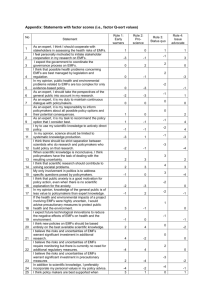
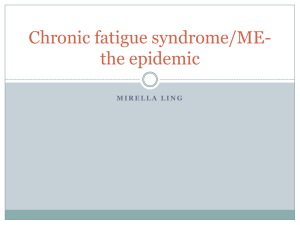
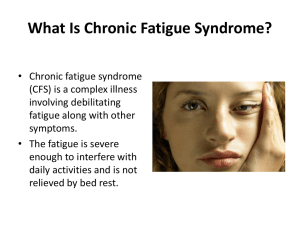

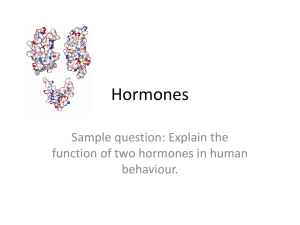

![[vnd.ms-powerpoint] IAM 2013 Oswal Ruigrok Agrawal](http://s2.studylib.net/store/data/005481699_1-8bf69c9559a55689d88ba4feef65d0ab-300x300.png)

